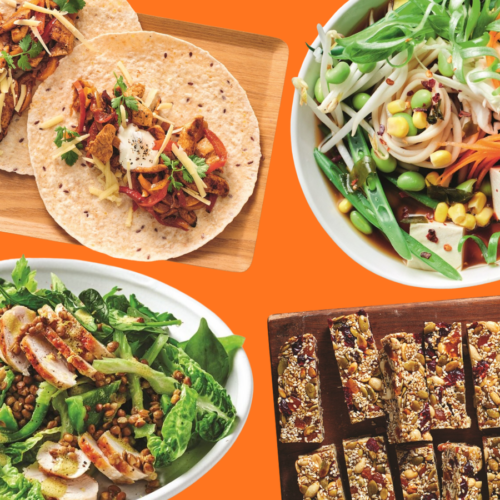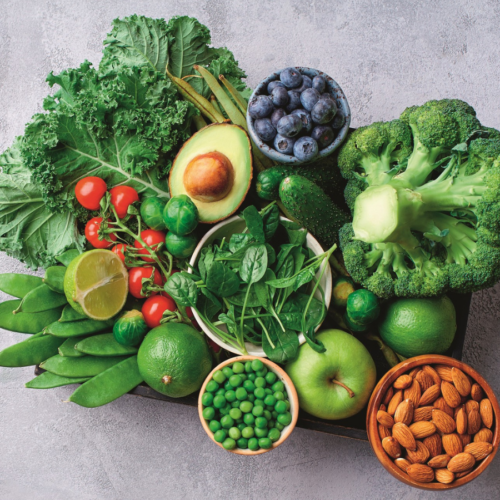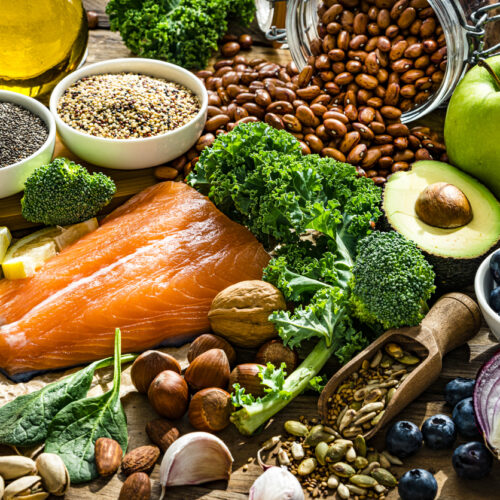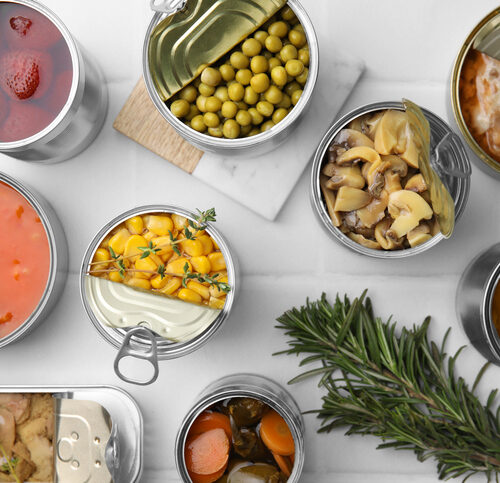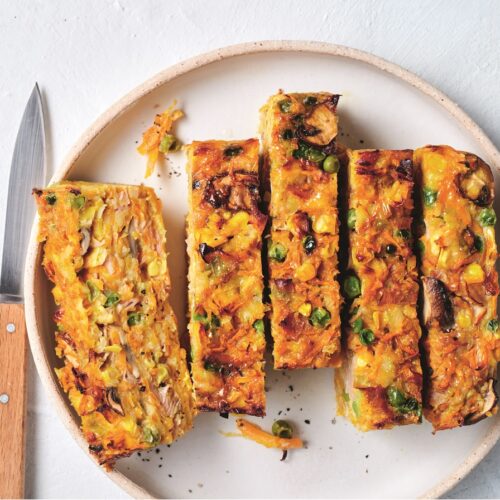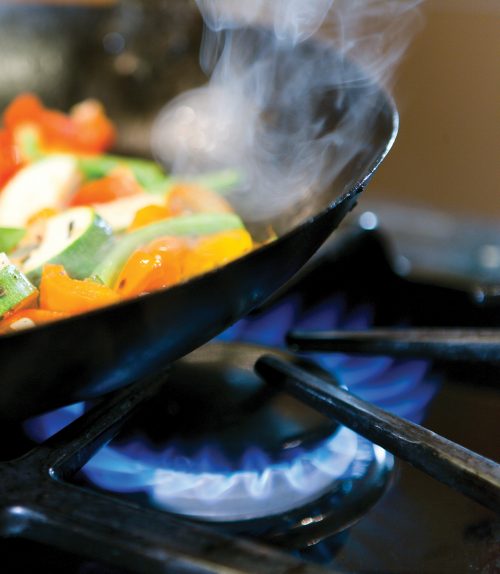
We all know veges are great for us – but different veges need different treatments to get the best possible nutrition benefits. Dietitian Jennifer Yee Collinson has an easy guide to cooking your 5+ a day.
Vegetables are pretty versatile, and most suit a variety of cooking methods. Each type of coloured vegetable (including the brown/white colour group such as onions, parsnips, cauliflower, mushrooms and potatoes), offers a unique blueprint of nutrients and phytochemicals, which play essential and important roles for maintaining a healthy body.
To minimise the loss of water-soluble vitamins such as vitamin C and B vitamins, some methods of cooking are better than others. Some vitamins are destroyed by heat, so eating a mixture of raw and cooked vegetables gives us the benefit of not only maximum nutrition but varying textures and flavours.
On the other hand, some vegetables need to be well cooked to get maximum benefit from specific phytonutrients. These are better absorbed when the vegetables are cooked, as the process of cooking ruptures the plant cells and allows the nutrients to be more readily available to us when digested. A well-known example is lycopene, which is more bioavailable in cooked and processed tomatoes such as sauces and pastes. Lycopene is fat soluble, so its absorption can be further enhanced by the addition of a small amount of oil such as canola, rice bran or olive oil. When combined with oil, lycopene is taken into the bloodstream more readily.
Brassicas
Brassicas love to be steamed. Cauliflower, cabbage, broccoli and broccolini are sources of vitamin C, folate and fibre and eating these often may offer protection against cancers, heart disease and stroke. By steaming these veges for five minutes, the calcium in the plant cell walls remains intact. Brief cooking brings out the best in these champion vegetables.
Leafy vegetables
Leafy vegetables love to be wilted. Dark-green beauties such as spinach, silver beet and watercress provide not only vitamins A and C and folate but they are quickly transformed into velvety piles of soft leaves which are a great accompaniment to grilled meats and fish. Wilt in a hot pan for 30 seconds, or add at the last minute to soups to add colour and a burst of mineral flavour. You can wrap these leaves in filo and create a classic such as spanakopita or include them in a pie filling, adding layers of deep green to contrast the other ingredients.
Asian greens
Asian greens love to be wok-fried and stir-fried. Bok choy, gai laan, mustard cabbage and wong bok can be sliced and added to a hot pan or wok, already heated with a little oil and finely sliced ginger or crushed garlic (until fragrant). Toss for a few minutes to coat the leaves and add 1-2 tablespoons water to the pan to create steam. Place a lid over the leaves briefly until the greens change colour, toss again and serve.
These tasty greens also lend themselves to quick and easy soups and are a good source of vitamin C and vitamin A.
Fresh or frozen beans and peas
Fresh or frozen beans and peas love to be blanched. These veges need only a quick cook (one to two minutes) in no more than two centimetres of boiling water before draining.
For salads, blanch green beans, snow peas and sugar snap peas in boiling water until they are bright green, before refreshing in icy cold water to prevent further cooking and to hold the colour and nutrients. Drain them well in a colander before you toss them with other salad ingredients.
Try mixing whole cherry tomatoes with beans or snow peas and raw or roasted nuts such as macadamias, walnuts or almonds for a simple, colourful vegetable side dish. The main nutrients in beans are folate, vitamin A and vitamin C – plus they contain fibre and carotenoids.
Starchy tubers, pumpkin and leeks
Starchy tubers, pumpkin and leeks love to be in soups. Soups are a good way to include a variety of vegetables in a tasty and economical meal. Chunky pieces of potato, kumara, pumpkin and sliced leeks lend themselves to being added to soups (cook until soft) to extend the nutrient value, heartiness and flavour.
Chunky vege pieces can also be added to braises and slow-cooked dishes to add body and texture. Pumpkin is a great source of vitamin A and kumara a source of vitamin C, calcium, iron and potassium. The popular potato provides both potassium and vitamin C.
Bright coloured root vegetables
Bright coloured roots love to be roasted. When carrots, beetroot and yams are roasted in the oven with a toss of olive oil, salt and pepper, their natural sweetness is enhanced in the caramelisation process. Roast in chunks for about 30 minutes or until soft. The cooking process and the addition of the oil also helps us absorb valuable carotenoid pigments in these vegetables. You may also like to try grated carrot and beetroot in cake or muffin recipes.
Beets readily bleed into the cooking liquid, but a splash of balsamic vinegar or lemon juice will help a little.
Tomatoes
Tomatoes love to be sauced, grilled and roasted. Apart from providing better accessibility to lycopene, the above cooking methods also enhance the flavour of the fruit as caramelisation of the natural sugars occurs when heat is applied.
If you have a surplus from the garden, you can make your own delicious semi-dried tomatoes: sprinkle with crushed garlic, drizzle with olive oil and season with salt and pepper, before roasting in the residual heat of the oven overnight after cooking a roast. Remove from the oven the next morning and splash liberally with balsamic vinegar. Chill until ready to use, adding fresh basil before serving if you prefer.
Other useful ways to cook veges
- Pop vegetables straight into casseroles and stews for added nutrition. Tried and true are leeks, carrots, celery and onions to add at the beginning of the dish to provide a base for meats to sizzle and brown before including a bay leaf or bouquet garni and canned or fresh tomatoes, water or stock.
- Throw veges on the barbecue. Try large flat mushrooms, corn on the cob, courgettes cut lengthwise, sweet capsicums and fleshy asparagus all drizzled with a little vegetable or olive oil and liberally dusted with freshly ground black pepper.
How to keep greens green!
The bright green colour we first see when green vegetables are dropped into boiling water is due to the rapid expansion of gases that are trapped in the spaces between the plant cells. The green-ness dulls on cooking because the plant pigment chlorophyll is easily lost into the cooking liquid and changes to dull olive-green from prolonged heating and partly due to enzyme action. Acid conditions also speed up this colour change, and there are natural acids in the plant cells, but tap water is generally alkaline so should work in favour of keeping your vegetables green.
- The trick is to keep the cooking times for greens short (between five to seven minutes or less).
- Leave vinegary dressings off until you are ready to serve. This will also keep your vegetables true to colour.
- Keep an eye out when cooking vegetables: if colours start to change or fade, then it is a good indicator that nutritional value and phytochemicals are being destroyed. You need to maintain as much of the vibrant colour as possible.
www.healthyfood.com


